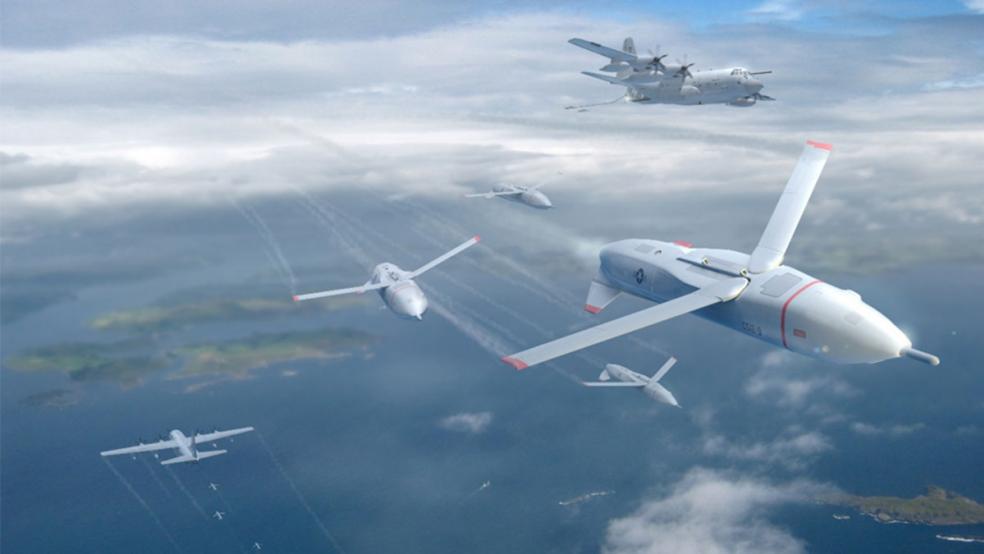It is widely believed that the air warfare of tomorrow will rely even more heavily on killer drones, but in a twist that could lessen the need for wildly expensive weapons systems, swarms of those lethal UAVs (unmanned aerial vehicles) could be disposable.
Related: Top Pay for Top Guns: Fighter Pilots Could Get $455,000 in Bonuses
At a conference last week hosted by the Air Force Association’s Mitchell Institute for Aerospace Studies, a top Pentagon strategist suggested that autonomous, intelligent drones hunting targets in packs could make some multimillion-dollar weapons obsolete, Defense News reported. And they might not even return to base.
“There’s a reason why we don’t take fine china and crystal to have picnics anymore,” William Roper, chief of the Pentagon’s Strategic Capabilities Office said, according to the website National Defense. “Once you’ve used paper plates and Dixie cups, you’re not coming back from that. It makes it a completely different experience. We haven’t had that equivalent in the military.”
“All the things we build are expensive, and if they take off, it’s our expectation that they come home and land,” Roper said, adding that until now, survivability has constrained designed and planners. But relying on lower-cost robotic weapons that don’t require refueling, maintenance or protection could decrease the chances of human losses, deliver more operational flexibility and reduce budgets.
The notion of a swarm of drones launched and directed by a manned aircraft isn’t new, but what is fresh is the idea of sending wave after wave of throwaway UAVs into battle without risking the life of a human.
Related: More Killer Drones, Please: The Air Force Places a $371 Million Order
Roper didn’t say what such expendable weapons might cost. The price tag on General Atomics’ MQ-9 Reaper drone, which can carry up to four Hellfire missiles, is about $17 million. Presumably, a disposable attack drone would cost far less.
But one analyst Defense News talked with was skeptical. “We can't even get a fighter jet to work for all the requirements of the different services,” he said.





